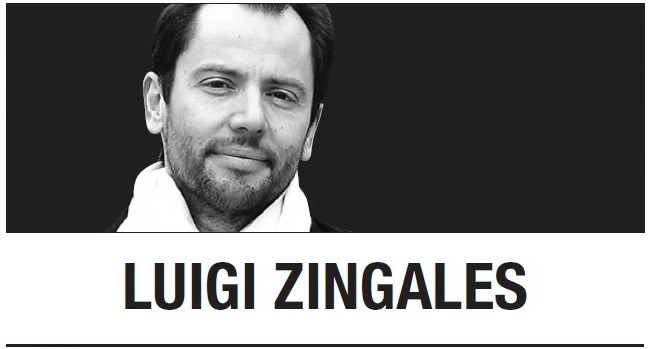
But this opposition of state and market is misleading, and it poses a major obstacle to understanding and addressing today’s policy challenges. The dichotomy emerged in the 19th century, when arcane government rules, rooted in a feudal past, were the main obstacle to the creation of competitive markets. The battle cry of this quite legitimate struggle was later raised to the principle of laissez-faire, ignoring the fact that markets are themselves institutions whose efficient functioning depends on rules. The question is not whether there should be rules, but rather who should set them, and in whose interest.
In the 21st century, this state-market contrast is obsolete. State intervention can promote markets. The portability of cellphone numbers that most developed countries have introduced has spurred competition among cellular providers. US Federal Aviation Administration safety regulations persuade passengers to trust new airlines, thereby encouraging new entrants and competition in the sector. Not only did Operation Warp Speed accelerate the development of a COVID-19 vaccine, but it also promoted more competition among vaccine producers.
But while some rules foster competitive markets, many others interfere with them. In some cases, like the restrictions on the resale of N95 face masks at the start of the pandemic, the interference is justified on the basis of higher principles. In many others, such as limits on the number of places in medical schools, interference simply reflects the influence of vested interests trying to distort the market.
The main divide, therefore, is not between the state and markets, but between pro-competitive and anti-competitive rules. And within the universe of anti-competitive rules, the key distinction is between those that are justified by a higher principle and those that are not.
In the 19th century, the laissez-faire principle was also abused in order to block welfare programs, in the name of a misguided social Darwinism. But social welfare schemes are not inimical to the functioning of markets. In fact, as Raghuram G. Rajan and I argued almost two decades ago in our book “Saving Capitalism From the Capitalists,” such schemes might help markets become more resilient. So, the choice is not between state and market, but between welfare programs that promote markets and programs that distort them.
During the 19th-century battle to liberate markets from feudal rules, it was easy to associate markets with freedom and the state with oppression. The twentieth-century identification of state-led economic planning with Soviet-style socialism made this link even stronger.
Today, however, this association no longer necessarily holds. In a world of digital monopolies, laissez-faire enables disproportionate power to be concentrated in a few hands. This fuels oppression, not individual liberty. Is one company’s ability to edit the news for 3 billion people an indicator of freedom? Conversely, is state regulation that protects our privacy from constant surveillance a tool of repression?
Another crucial trade-off, therefore, is not between state oppression and market freedom, but between the oppression resulting from the existence of monopolies (whether private or state-controlled) and the freedom to choose offered by competitive markets.
The battle nowadays is not over more state or more market. It is instead partly a struggle to ensure that market power does not interfere with the state’s ability to carry out the functions it performs best. The state, for example, has a comparative advantage in dealing with negative externalities like air and water pollution. But corporate lobbying is severely hampering governments’ ability to address such externalities with ad hoc taxes or regulation.
It is no less important to ensure that the state does not interfere with the market’s ability to do what it does best. For example, markets are generally better than state bureaucracies at allocating capital. But state governments in the United States keep imposing rules on who should be financed. For example, Arkansas requires its public pension funds to invest between 5 percent and 10 percent of their portfolios in Arkansas-related investments.
In sum, we should strive to achieve a better state and better markets, and to contain each within its respective spheres. And yet the facile state-versus-market narrative lives on, because it greatly benefits vested interests. Digital monopolies can use it -- falsely -- to present themselves as champions of individual freedom. Small-government advocates can use it to oppose welfare programs in the name of “free” markets. And policymakers and business lobbyists can wheel it out to spin corrupt corporate subsidies as enlightened state intervention against evil markets or evil foreigners.
But the state-market antagonism is a trope that has had its day. The sooner we rid ourselves of this post-feudal relic, the sooner we will be able to use states and markets to address today’s real challenges.
Luigi Zingales
Luigi Zingales, a professor of finance at the University of Chicago, is co-host of the podcast Capitalisn’t. -- Ed.
(Project Syndicate)
-
Articles by Korea Herald








![[KH Explains] Hyundai's full hybrid edge to pay off amid slow transition to pure EVs](http://res.heraldm.com/phpwas/restmb_idxmake.php?idx=644&simg=/content/image/2024/04/18/20240418050645_0.jpg&u=20240419100350)







![[From the Scene] Monks, Buddhists hail return of remains of Buddhas](http://res.heraldm.com/phpwas/restmb_idxmake.php?idx=652&simg=/content/image/2024/04/19/20240419050617_0.jpg&u=20240419175937)

![[KH Explains] Hyundai's full hybrid edge to pay off amid slow transition to pure EVs](http://res.heraldm.com/phpwas/restmb_idxmake.php?idx=652&simg=/content/image/2024/04/18/20240418050645_0.jpg&u=20240419100350)

![[Today’s K-pop] Illit drops debut single remix](http://res.heraldm.com/phpwas/restmb_idxmake.php?idx=642&simg=/content/image/2024/04/19/20240419050612_0.jpg&u=)